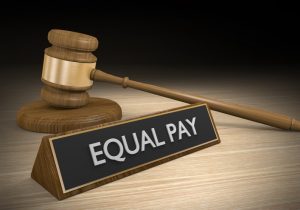More Biglaw Firms Reveal Their Own Gender Pay Gap
More data on the Biglaw gender pay gap.
 The U.K.’s Equality Act of 2010 is really a great law. It requires all employers with more than 250 employees to report on the differences between what male and female employees make. As a result, there are quite a few Biglaw firms that have been forced to disclose their own pay gap.
The U.K.’s Equality Act of 2010 is really a great law. It requires all employers with more than 250 employees to report on the differences between what male and female employees make. As a result, there are quite a few Biglaw firms that have been forced to disclose their own pay gap.
All of the firms that have reported thus far exhibit some manner of a compensation disparity. As has become a trend in analyzing these reports, women tend to the occupy support roles at the firm, and a big part of the discrepancy can be chalked up to that difference. This trend continued with the release of Kirkland & Ellis’s pay gap numbers. At that firm, women made up the majority of the two lowest-paying quartiles, while men made up more than 62 percent of the highest-paid employees. As reported by Legal Business, this translates into a 33.2 percent average pay gap:
Kirkland’s report showed that male employees are paid on average 33.2% more than women, a gulf which widens to 68.2% on a median basis. Men took home on average 62.3% more in bonuses with the median pointing to a 74.3% advantage to male bonuses.

The Business Case For AI At Your Law Firm

The good news was that at K&E, women had a slight advantage (77.9 percent of women versus 77.4 percent of men) when it comes to taking home bonuses.
Similar discrepancies were seen at Weil Gotshal & Manges — including a slight advantage in the percentage of women receiving bonuses:
Weil’s report, published on Wednesday (28 March) revealed the firm pays its female staff on average 38% less than males, a disparity which widens to 53% when calculated on a median basis. Male employees received an average 50% more in bonuses, while the median figure puts male bonuses 55.8% ahead of women’s bonuses.
That firm’s report even goes on to directly point to the amount of women in support positions as the primary factor in the shocking pay gap:
Sponsored

Navigating Financial Success by Avoiding Common Pitfalls and Maximizing Firm Performance

The Business Case For AI At Your Law Firm


Legal AI: 3 Steps Law Firms Should Take Now

Is The Future Of Law Distributed? Lessons From The Tech Adoption Curve
‘If we exclude those in secretarial roles from our gender pay calculations, our mean gender pay gap reduces to 24.95% and the median to 7.28%’, the report states.
Though the firm also released a statement stating the firm’s commitment to efforts designed “to retain women in senior positions, particularly amongst our lawyers.”
Two firms reported slightly better numbers. Mayer Brown’s numbers are somewhere in the middle — a 15.3 percent average pay gap overall, which translates to 34.2 percent on a median basis. Men there also had an eight percent advantage over women when it comes to receiving bonuses.
At Baker McKenzie, male employees average 17 percent more than females — and the gap rises to 32 percent when looking at the median numbers. But the firm also calculated the pay gap specifically to associates, and one blessing of lockstep pay scales is the elimination of a pay gap:
The firm said the hourly gap ‘disappears altogether when associate roles are examined on a standalone basis’. But it conceded there is a ‘small hourly pay gap’ in its business services roles reflecting the fact it has too few women in the most senior positions.
Sponsored

Early Adopters Of Legal AI Gaining Competitive Edge In Marketplace

Is The Future Of Law Distributed? Lessons From The Tech Adoption Curve
These numbers might be frustrating, but at the least the knowledge of the scope of the issues is an important first step to remedying it.
 Kathryn Rubino is an editor at Above the Law. AtL tipsters are the best, so please connect with her. Feel free to email her with any tips, questions, or comments and follow her on Twitter (@Kathryn1).
Kathryn Rubino is an editor at Above the Law. AtL tipsters are the best, so please connect with her. Feel free to email her with any tips, questions, or comments and follow her on Twitter (@Kathryn1).







